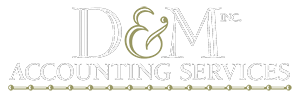One of the more appealing features of a 401(k) plan is that the money to build it comes out of your paycheck pre-tax. You never have it in hand, so it’s hard to miss. The remaining balance of your paycheck may be taxed at a lower rate because the 401(k) contribution can put you into a lower tax bracket. That becomes routine while you’re working on the same job.
Moving to a new employer creates another scenario. A Marist Poll published last September revealed that 38% of Americans changed jobs is 2022. Higher pay was the main reason. Better benefits and flexible schedules were also cited. In many cases, employees needed to roll over their 401(k) plans. There are several ways to do that, some of which incur a tax liability.
Option #1: 401(k) rollover to a new 401(k)
Your new employer may offer a 401(k) plan of their own. This is a question that you should ask before taking a new position. If they have a plan in place, you have the option of simply rolling your old 401(k) into the new one. Speak with the plan administrator at your new company for details on how to do that. You’ll need to sign a few forms and the 401(k) provider will do the rest.
There’s no tax liability for moving from one 401(k) to another. Your vested funds will remain intact, but any matching stock from the old company that hasn’t vested yet may be lost. Check your employment agreement for the rules on that. All contributions and employer matches are tax-deferred, so you won’t need to pay taxes on them until you withdraw them.
Option 2: Leave your 401(k) with the old employer
Some companies allow you to keep your 401(k) plan with them even after you leave the company. This is not as popular as doing a rollover, but it can be a good option if your new employer doesn’t offer a retirement plan. It’s also a great scenario for employees matriculating to independent contracting or gig work where benefits are not available.
Leaving your 401(k) plan in place doesn’t change its tax status. You can still make pre-tax contributions to it. The plan administrators may charge you a higher fee to manage it though. Check the fine print on your 401(k) agreement or speak with someone at the plan provider’s office to get more details on this. They may have a better option for you.
Option 3: 401(k) rollover to a traditional IRA
A traditional IRA is a retirement savings account offered by a financial institution and managed by you. The letters stand for “individual retirement account.” The institution will charge you an administrative fee to maintain it, but you’ll be able to choose which funds you invest in. This is different from a 401(k) where the funds are selected for you based on your risk tolerance.
Like a 401(k) plan, contributions to an IRA are tax-deferred. Those contributions should be entered on line 32 of Part II of your 1040. They’ll be deducted from your gross income before your tax is calculated. In 2023, the IRS allows you to contribute a maximum of $6,500 to an IRA, $7,500 if you’re over 50 years old. The rollover does not count toward that limit.
Option 4: 401(k) rollover to a Roth IRA
A Roth IRA is built with after-tax contributions. That makes withdrawals from the fund in retirement tax-free. On the downside, a 401(k) rollover into a Roth IRA will create a tax liability. The total amount, because you’re converting it to after-tax dollars, will be taxed as income for the year in which you do the rollover. Income tax rates range from 10% to 37%.
It’s important to note here that you can have a traditional IRA or Roth IRA and a 401(k) at the same time. This is often done to increase total retirement savings. The contribution limits on a Roth IRA are the same as those on a traditional IRA ($6,500/$7,500). With a 401(k), you’re allowed to contribute up to $22,500 before 50 years old and $30,000 a year after that.
Option 5: Cash out the 401(k)
Sometimes, you just need the money. When you leave your old employer, you can simply request a check for the balance of your 401(k), but don’t expect to get the entire amount. Retirement savings are meant to be withdrawn when you’re retired. The IRS will tax you 20% if you cash out and charge you a 10% early withdrawal fee. That’s nearly a third of your savings.
It’s best to seek another alternative, even if you’re strapped for cash. 401(k) providers often give you the option of borrowing against your savings, so a rollover could still help you achieve your goals. IRAs are even more flexible. You can withdraw funds without a penalty if you have medical issues, a permanent disability, or need to buy or build a home.
The Bottom Line
There are several options for rolling over a 401(k). Moving to a new 401(k) will not incur a tax liability. Neither will be keeping your 401(k) with your former employer or a rollover into a traditional IRA. Doing a rollover into a Roth IRA converts your retirement savings into after-tax dollars, so you’ll need to pay income tax on them. Cashing the plan out will cost you 20% in taxes and a 10% penalty. That should be your last option. Call us if you need additional help with this.


